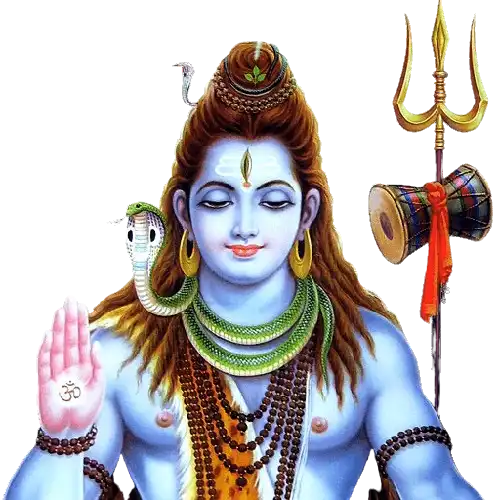1. The Multifaceted Nature of Lord Shiva
Shiva is worshipped in various forms. As the Shivalinga, he represents the formless aspect of the Divine, while his anthropomorphic depictions often show him with a blue throat, due to swallowing poison during the churning of the ocean to obtain the amrita (nectar of immortality), holding a trident (Trishula), and with a serpent around his neck. He is also depicted sitting on a tiger skin, with the sacred river Ganga flowing from his matted hair, which signifies his ability to control the power of the Ganges with his Shakti.
2. Shiva's Family
Shiva is part of a divine family, with his consort, Parvati, and their children, Ganesha and Kartikeya. Parvati, an incarnation of Shakti, the divine feminine power, is considered the perfect complement to Shiva, representing the dynamic and creative force of the universe. Their union symbolizes the balance between energy and consciousness, creation and destruction, and form and space.
3. The Cosmic Dance of Nataraja
The depiction of Shiva as Nataraja performing the Ananda Tandava (dance of bliss) in a circle of flames is a powerful symbol in Hinduism. It represents the cycle of creation, preservation, and dissolution, reminding devotees of the cosmic laws that govern the universe. The dance is a metaphor for the belief that life is a series of rhythmic cycles and transformations.
4. Shiva's Abode and Worship
Shiva is said to reside on Mount Kailash in the Himalayas. His worship involves the offering of water, milk, and leaves from the Bilva tree, which are believed to be sacred to him. The festival of Maha Shivaratri is celebrated in his honor, marking the night when Shiva performs the heavenly dance. Devotees observe fasts, chant the sacred mantra "Om Namah Shivaya," and make offerings to Shiva Lingam.
5. FAQs
Shiva is known as 'The Destroyer' within the Trimurti because his role is to destroy the universe in preparation for its renewal by Brahma, the creator. This destruction is not seen as negative but as a necessary step for regeneration.
The Shiva Lingam represents the formless aspect of Shiva, symbolizing the unity of the universe and the divine. It is worshipped as a symbol of generative power and the essence of existence.
Yes, Shiva is worshipped by people from various walks of life. His teachings and the symbolic meanings of his stories and attributes transcend social and economic barriers, offering spiritual insights to all.
Maha Shivaratri is celebrated with fasting, vigils, and the chanting of Shiva mantras. Devotees visit temples, offer prayers, and make offerings to the Shiva Lingam to seek blessings for health, happiness, and moksha (liberation).
6. Online Resources
-
Virtual Temples: Experience the spiritual ambiance of Shiva temples through virtual tours available online, allowing devotees to offer prayers from anywhere in the world.
-
Shiva Purana Online: Access the Shiva Purana, an ancient text that recounts the legends of Shiva, available in various languages and formats for study and devotion.
-
Maha Shivaratri Celebrations: Websites and social media platforms feature live streams of Maha Shivaratri celebrations from major Shiva temples, enabling devotees to participate in rituals and prayers virtually.
-
Yoga and Meditation Resources: Given Shiva's association with yoga as Adiyogi, the first yogi, there are numerous resources for learning yogic practices and meditations inspired by his teachings.
7. Conclusion
Lord Shiva's profound symbolism and teachings continue to inspire and guide countless individuals on their spiritual journey. His representation as both the destroyer and the benefactor symbolizes the cyclic nature of the universe and the importance of dissolution for renewal. Through his stories, symbols, and rituals, Shiva communicates deep philosophical truths, inviting devotees to explore the mysteries of life, death, and beyond. His timeless wisdom and the universal principles he embodies make him a central figure in the spiritual and cultural heritage of humanity.

